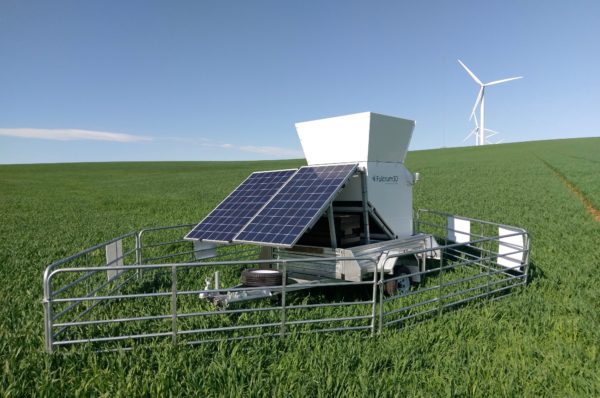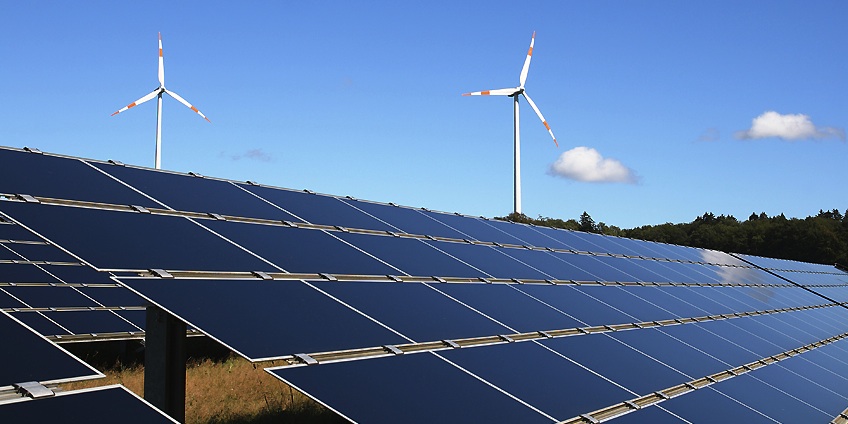Province Resources last month unveiled its HyEnergy Renewable Hydrogen Project, including plans for a 1 GW wind and solar PV facility to be established in the Gascoyne Region of Western Australia. The energy from that project will be used to produce approximately 60,000 tons of green hydrogen per year, or up to 300,000 tons of green ammonia.
The Perth-based company, which enjoyed a major boost to its stock price in the wake of the HyEnergy announcement, this week revealed that within four weeks it will deploy a monitoring station at the proposed site to accelerate data collection required to support feasibility studies.
Province Resources managing director David Frances said the data collected will enable the proposed solar array network and wind turbines to be optimised prior to the final project scope and scale decision point.
“It is great to be able to hit the ground running on the exciting HyEnergy green hydrogen project,” he said.
“I look forward to progressing the feasibility studies as quickly as possible, whilst also planning the initial fieldwork programs to assess the salt, potash and mineral sands target areas within the greater Gascoyne Project.”
Province has declared the proposed location, near Canarvon in the state’s north-west, is ideal for the development of a large-scale renewable energy facility but said the monitoring station, provided by Sydney-based technology company Fulcrum3D, will collect preliminary wind and solar data every 10 minutes within the project area to assess the wind and solar resource potential.
Data already provided by Province indicates Canarvon’s solar is amongst the highest irradiance in the world, averaging 211 sunny days per year with an average solar exposure of 22 Mj or 6.24 kWh per day. And, due to being on the western edge of the continent, it has excellent wind resources.
Many developers of solar farms have avoided on-the-ground resource monitoring, opting to rely on satellite data alone but Province said it is crucial accurate solar data is captured for the specific site location for such large capital investments to build a solar array network of commercial scale.

Image: Fulcrum3D
The company said it will utilise Fulcrum3D’s Sodar (Sonic Detection and Ranging) weather monitoring system.
Fulcrum3D general manager Jo Hume told pv magazine reliable data is essential for effective project design and management – from both a technical and financial point of view.
“Accurate resource assessment for wind and solar energy developments is critical for bankability and risk management and for ensuring optimal power plant design,” she said.
“Bankers and asset owners do not welcome unpleasant surprises around project yield once the project is built. Accurate ground-based solar resource assessment is proving to generate more accurate yield assessments than satellite-based assessments.”
Fulcrum3D said there are now more than 170 Sodar units in operation around the world, with each one tailored to site specific project requests.
Province said it will look to commence feasibility studies for both the renewable power generation and green hydrogen production within the next 12-18 months.
Green hydrogen has dominated renewables news this year, with Australia eager to position itself as a key exporter of hydrogen.
Province acknowledged the hydrogen industry is in its infancy in Western Australia, but said in a statement “it is truly amazing how swift and significant the move into sustainable energy by both governments and corporations around the globe has been of late”.
“Green hydrogen produced from renewable sources, such as wind and solar energy, looks set to play a significant role in navigating society towards a decarbonised future and meeting the global aim of net zero emissions by 2050,” it said.
This content is protected by copyright and may not be reused. If you want to cooperate with us and would like to reuse some of our content, please contact: editors@pv-magazine.com.









3 comments
By submitting this form you agree to pv magazine using your data for the purposes of publishing your comment.
Your personal data will only be disclosed or otherwise transmitted to third parties for the purposes of spam filtering or if this is necessary for technical maintenance of the website. Any other transfer to third parties will not take place unless this is justified on the basis of applicable data protection regulations or if pv magazine is legally obliged to do so.
You may revoke this consent at any time with effect for the future, in which case your personal data will be deleted immediately. Otherwise, your data will be deleted if pv magazine has processed your request or the purpose of data storage is fulfilled.
Further information on data privacy can be found in our Data Protection Policy.